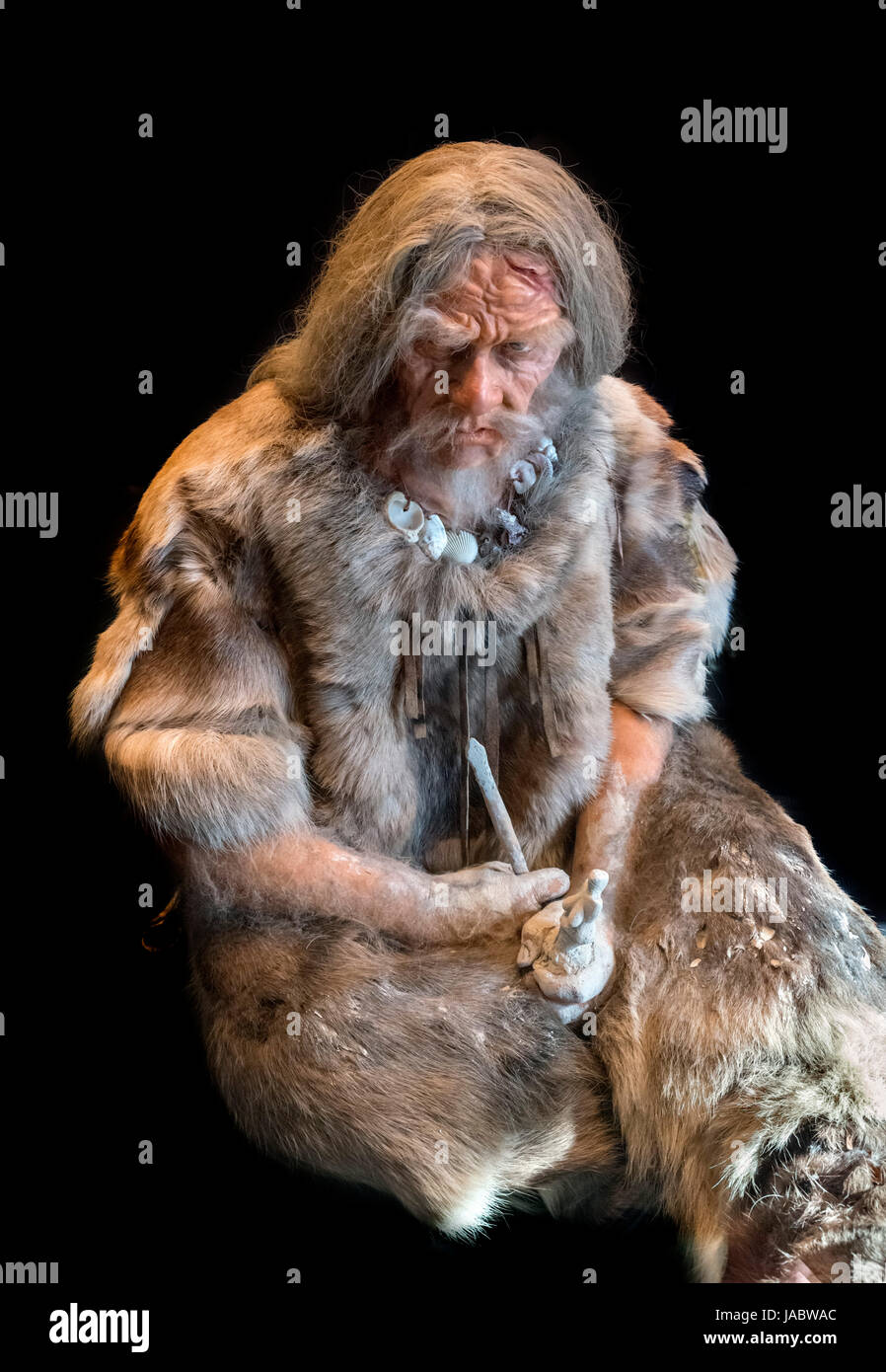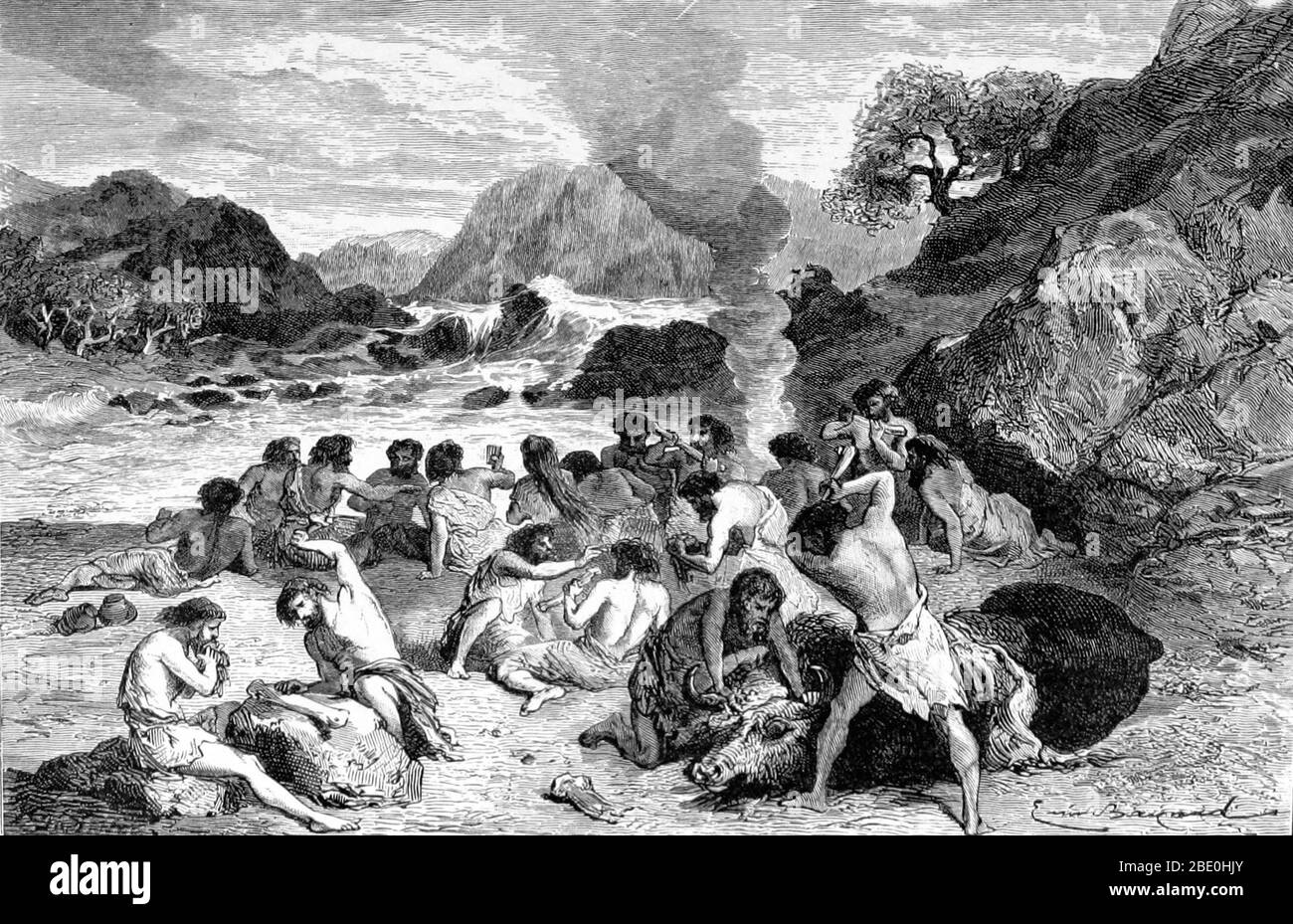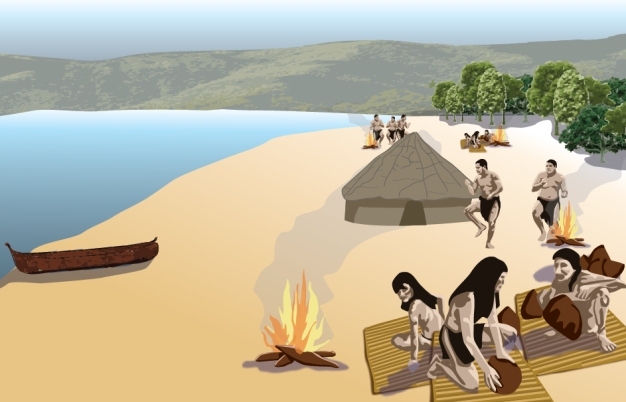Modern Human Beings in the Upper Paleolithic/late Stone Age
The Upper Paleolithic was a period of great transition in the world. However by 9 0000-75000 years ago some modern humans began producing new kinds of artifacts that were revolutionary enough to warrant their being placed into a different Paleolithic stage--the Upper Paleolithic.

Upper Paleolithic Human High Resolution Stock Photography And Images Alamy
This was the height of technical sophistication during the Old Stone Age.

. The transition from the Middle Stone Age to the Late Stone Age is thought to have occurred first in eastern Africa between 50000. What fundamental changes in human behavior demarcate the Middle Paleolithic and Middle Stone Age from the Upper Paleolithic and Late Stone Age. The most striking evidence for a modern human capacity for culture in the Upper PaleolithicLate Stone Age comes from.
Were more numerous and more widespread than were previous hominins. The Middle Stone Age was a period of African prehistory between Early Stone Age and Late Stone Age. Research also indicates that this is the period in history when modern Homo sapiens sapiens Cro-Magnons began to replace the.
The Later Stone Age is a period in African prehistory that follows the Middle Stone Age. The Upper Palaeolithic also called the Late Stone Age is the third and last subdivision of the Palaeolithic or Old Stone Age. Were the first hominins to occupy the coldest harshest climates in Asia.
Anatomically modern human beings produced sculptures that depict lunar phases. Humankind gradually evolved from early members of the genus Homosuch as Homo habilis who used simple stone toolsinto anatomically modern humans as well as behaviourally modern humans by the Upper Paleolithic. The pace of innovations rose.
Suffered few injuries and were relatively healthy C. A at least 40000 years. Suffered few injuries and were relatively healthy.
Later Stone Age tools include the toolkits called Upper Paleolithic in Europe and Late Stone Age in Africa. These toolkits are very diverse and reflect stronger cultural diversity than in earlier times. The Later Stone Age is associated with the advent of modern human behavior in Africa although definitions of this concept and means of studying it are up for debate.
It is considered as an equivalent of European Middle Paleolithic. A Middle Paleolithic stone-tool tradition associated with Neanderthals in Europe and southwestern Asia and with anatomically modern human beings in Africa. Modern human beings in the Upper PaleolithicLate Stone Age A.
The Neanderthals in Europe became edged out and disappeared by 33000 years ago and modern humans began to. The Neanderthals in Europe became edged out and disappeared by 33000 years ago and modern humans began to have the world to themselves. Groups of Homo sapiens experimented with diverse raw materials bone ivory and antler as well as.
Were more numerous and more widespread than were previous hominins B. Very broadly it dates to between 50000 and 12000 years ago the beginning of the Holocene according to some theories coinciding with the appearance of behavioral modernity in early modern humans until the. The Late Upper Paleolithic Model or Upper Paleolithic Revolution refers to the idea that though anatomically modern humans first appear around 150000 years ago as was once believed they were not cognitively or behaviorally modern until around 50000 years ago leading to their expansion out of Africa and into Europe and Asia.
In the Upper Paleolithic and Late Stone Age the subsistence base. The origins of social stratification. What Was the Upper Paleolithic Revolution.
A shifts from hunting to a reliance on gathered plant foods b a narrowing of the food quest to a few very productive foods. The Upper Paleolithic or Upper Palaeolithic also called the Late Stone Age is the third and last subdivision of the Paleolithic or Old Stone Age. The Upper Paleolithic Revolution occurred during the final era of the Late Stone Age between 10000 and 50000 years ago just before the practice of agriculture became widespread.
Were the first hominins to occupy the coldest harshest climates in Asia D. During a period called the upper palaeolithic between 50000 and 10000 years ago there was a cultural explosion. Fragmentary Knowledge on the Arrival of Modern Humans in Europe.
Although these humans were modern in anatomy their culture had changed very little and they still used the same crude stone tools as the Neanderthals and erectus. Modern human beings in the Upper PaleolithicLate Stone Age. While the notion of a creative explosion has given way to a recognition of a long history of the development of human.
The increased use of exotic raw materials at Upper Paleolithic and Late Stone Age sites when compared to Middle Paleolithic and Middle Stone Age sites is evidence for. Upper Paleolithic Refers to the most recent part of the Old Stone Age associated with early modern Homo sapiens and characterized by finely crafted stone and other types of tools with various functions. Upper Paleolithic Late Stone Age 45000-10000 Years Ago By the Upper Paleolithic 45000-10000 years ago the Neanderthals were in decline and by 30000 years ago they were gone.
Describe the evolution of Upper Paleolithic stone tool traditions in Europe. The last of the Neandertals died out before the first of the anatomically modern human beings appear. Modern humans spread all over the planet reaching the Sahul Australia about 50000 years ago mainland Asia about 28000 years ago and finally the Americas about.
This was the height of technical sophistication during the. Anatomically modern humans Homo sapiens emerged about 200000 years ago in Africa. All of the above.
It began around 300000 years ago and ended around 50000 years ago. Name the traditions describe them. The Upper Paleolithic ca 40000-10000 years BP was a period of great transition in the world.
Anatomically modern human beings are. One of the two papers released today in the journal Nature explains that before this study the earliest examples of modern humans in western Europe came from fragmented specimens at Kents Cavern UK 4420041500 years BP and Cavallo Italy 4500043000 years BP. The fact that the.
It is associated with anatomically modern or almost modern Homo sapiens. According to some theories coinciding with the appearance of behavioural modernity in early.

New Clues About The Denisovans Ancient Humans Who Live On In Our Dna Ancient Humans Ancient Neanderthal

Encampment Of Late Paleolithic Hunters Final Fantasy Vii Paleolitico Final Fantasy

Venus Of Hohle Fels Art History Prehistoric Art Art And Architecture

We Report The Remarkable Discovery Of An Early Aurignacian Occupation 5 000 Years Older Than Any Upper Paleolithic Site Neanderthal Prehistory Ancient People

Upper Paleolithic Foliates Made Of Flint Max Length 6 5 Cm Found In Tunisia Native American Artifacts Prehistory Paleo Indians

Stone Age Ancient Artifacts Prehistoric Native American Tools Stone Age Tools

Prehistoric Shamanism By Kennis And Kennismsf In 2022 Prehistoric Shaman Prehistory

Upper Paleolithic Human High Resolution Stock Photography And Images Alamy

Gif Paleolithic Man Lighting A Fire By Eric Le Brun

Late Stone Age High Resolution Stock Photography And Images Alamy

A Primer On Paleolithic Technology Learn Science At Scitable
The Oldest Upper Paleolithic Homo Sapiens In Eurekalert

Lissoirs Paleolithic Neanderthal Prehistory

Late Upper Paleolithic People In Japan Carrying Obsidian From Kozu Island By Teru Va Prehistoric World Prehistory Prehistoric Man

Pin On Antique Ancient Trade Ethnic Beads

Hunters During The Upper Paleolithic Upper Palaeolithic Late Stone Age Or Age Of The Reindeer Stock Photo Picture And Rights Managed Image Pic Xy2 2932844 Agefotostock

The Upper Paleolithic Period In Europe That Corresponds To The Later Stone Age In South Africa Also Spurred Complex Stone Age Prehistoric World Identify Plant

Mlady Paleolit 10 000 Prehistoric Art History Prehistoric Man

Comments
Post a Comment